Waltzing with Brando
Marlon Brando saw Tetiaroa for the first time while filming Mutiny on the Bounty in 1960 – 61. It consisting of 12 small islands, called motus, encircled by a blue lagoon and coral reef. It is 53 km (33 mi) due north of Papeete, Tahiti. It is 6,476 km southwest from Los Angeles. Tetiaroa is in the middle of the South Pacific Ocean.
The atoll belonged to the Tahitian royal family until 1904 when it was acquired by Johnston Walter Williams, a Canadian and apparently the only dentist in Tahiti at the time. Marlon Brando purchased Tetiaroa from the heirs in 1966 for a reported $200,000.
Brando wrote in his autobiography Songs My Mother Taught Me:
“The Lagoon was about five miles across at its broadest point and infused with more shades of blue than I thought possible…it was magical. Here I am on a tiny speck of land in the middle of a massive ocean on a planet in the middle of an inconceivably large area we call space… I have never considered myself as the owner of the island, only that I have paid for the privilege of visiting it. I think of all the Tahitians who have been there before me, lain on that same beach and looked at the same stars 500 or 1,000 years ago, and I feel the spirits of those people whenever I go to Tetiaroa.”
Cut to 2011. Los Angeles architect Bernard Judge published his memoir Waltzing with Brando: Planning a Paradise in Tahiti. It is the amazing story of a young Los Angeles architect who winds up working for Marlon Brando in the 1970s at the actor’s atoll in the South Pacific.
The blurb on the book’s back cover reads, “It is a narrative about Tetiaroa, Brandon’s private atoll, about living in nature without despoiling the environment. Questions are asked. Should a hotel be built? What are the consequences? It tells of how Brando and his architect came to an understanding, an appreciation for the atoll’s archeology, its ecology, and the interdependence of its marine life, sea birds and nesting turtle grounds. It is an unusual convergence of adventure, of reaching for a dream, and a compelling love story richly told and illustrated with beautiful historic photographs of the period.”
2025. The film Waltzing with Brando is now playing in theaters. It is scheduled to be released on streaming services in November. Written and directed by Bill Fishman, adapted from Bernard Judge’s book, the movie stars Billy Zane (Dead Calm, Titanic) as Marlon Brando and Jon Heder (Napoleon Dynamite) as Bernard Judge. Garrett O’Brien was the cinematographer.
Garrett O’Brien on Waltzing with Brando
Jon: How did you get started on Waltzing with Brando?
Garrett O’Brien: Writer-Director Bill Fishman invited me. I had done a number of music videos with him. He showed me architect Bernard Judge’s 2011 book Waltzing with Brando: Planning a Paradise in Tahiti on which the script is based. The movie follows their trials and tribulations through that process and the friendship that grows as the project develops into a resort in the middle of an atol in the middle of the Pacific Ocean.
The book is filled with photos that Judge took, using 1970s Kodak still film, while working on the project. These were a massive influence for me. A big part of the cinematography was to feel as if it had been shot during that time period and re-scanned now. We didn’t have the means to actually shoot it on film.
It was lovely to be able to look at the colors that were present in the book: beautiful vibrance and saturation mixed with the wardrobe of that era—very bright colors, shorter shorts and fewer shirts being worn. Sunblock wasn’t as much of a thing, so there were lots of warm skin tones on Caucasian people and the beautiful skin tones of the Tahitians. Those things really made for a cinematographer’s dream in a wonderful location to work.
You filmed on location in Tahiti?
Yes. We prepped there for about a month and then we shot there for another month. Then, we did another two weeks of prep and another 10 days of filming in LA. Everything that was LA was LA and everything in Tahiti was Tahiti. That added another level of authenticity that we would not have been able to accomplish without shooting in the actual environments and locations.
We shot at Brando’s actual island, Tetiaroa. Also on Moorea to double as Tahiti, as it is still relatively undeveloped and looks more like the way Tahiti did in the seventies and eighties. It’s part of what Brando himself responded to: peaceful, smaller, and also most importantly, the wonderful people who live there.
What became of Brando’s Island?
Brando built a modest hotel and later partnered with Pacific Beachcomber to build a luxury eco-resort appropriated named “The Brando,” intending it to be a hub for scientific research and a center for preserving Polynesian culture and the environment. The resort helps to fund the Tetiaroa Society for environmental studies, marine biology, conservation and sustainability.
The Brando is a fully functioning resort. Barack Obama wrote his memoirs there. It’s a very exclusive place, not for the light of wallet. I’ve had the fortune of traveling a lot but have never been anywhere quite like Tahiti. You’re in the middle of the Pacific Ocean. Everything is different there. The light’s different. You have sunsets that happen after the sun has already set below the horizon line because the air quality is so clear. There are incredible rays of light shooting up from below the horizon line.
Cameras?
We had two VENICE 2 8.6K cameras. The underwater unit used a Sony a7S in a housing. We also had a Blackmagic Pocket Cinema Camera 4K to simulate some of the historical footage that Brando shot with his Bolex with a handheld, cinema verité loose style. We treated it in post as if it really was old 16mm footage, complete with edge fogging and sprocket holes.
Did you run both VENICE 2 cameras at the same time?
Mostly it was a two-camera shoot. On occasion, it would be a single camera when I’d shoot main unit while we had the B camera break off to shoot second unit, whether it was driving shots or some action moments.
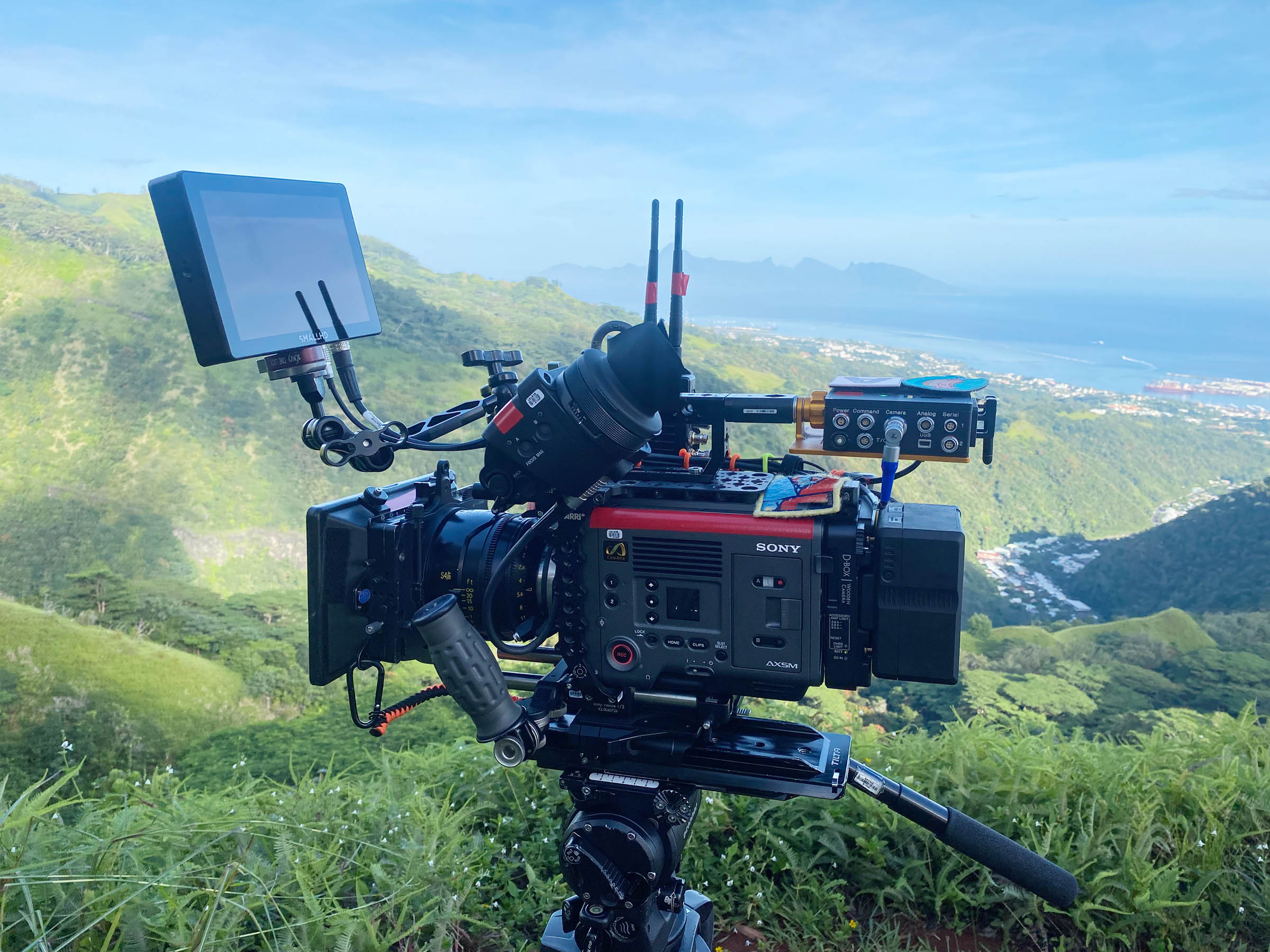
Tahiti hilltop with the island of Moorea in the background. Cooke S4/i, Sony VENICE, SmallHD, Preston FIZ, OConnor head, etc.
Lenses?
Cooke S4/i Primes. We also used Angénieux Optimo Lightweight Zooms: 15-40 mm T2.6 and 28-76 mm T2.6.
Oh, you were working in Super35, not Full Frame?
Yes. I find that the VENICE 2 is wonderful because it can do almost anything. It’s like a Swiss Army knife. You can work in almost any format because of how clean the sensor is. So, shooting in Super35, we were still at 5.8K resolution. You get a wonderful down-sample to 4K. At 800 ASA, it’s as clean as a whistle. There were setups where we wanted to have options to be able to punch in during post. For example, if we needed to push in, to enlarge the image another 15% or 20% to build a little progression, that’s a completely normal thing to consider, especially on location in Tahiti as the sun is setting and you’re scrambling for time.
Devil’s advocate: why are you using primes and not zooms? Because every lens change is maybe one to two minutes?
That’s a fair point. My counterargument is that with a prime lens, you are making a choice. For every shot, you are choosing where to put that camera in relation to the story that you’re telling. That has a far greater effect on the audience than almost anything else you can do. They don’t necessarily know why they’re feeling a certain way, but if I’m putting on a 27mm lens and moving it three feet from you versus being on a 40mm lens five feet away, that frame may be the same size, but the effect is different.

L-R, foreground: Garrett O’Brien; Wael Shukha, camera operator; Teva Juventin, Chief Lighting Technician (behind Garrett); Arnold Tetoe, Grip.
Devil’s advocate persists: why not use the zoom lens as a variable prime and not have to change lenses? You’re still making a conscious choice.
I do use Zooms. And the Angénieux Optimo Zooms intercut beautifully with the Cooke S4/i primes. For me, it’s the right scene in the right moment of when to choose to go to a prime or to zoom. Every decision I make is based on the story first, then logistical considerations and time to get it done. For example, when we shot the construction scenes where they’re taking bulldozers to the island, we were all on zooms for the entire day. We wanted to be on longer focal lengths and we knew it was going to be cut into a montage. These are necessary story elements and the main characters are not having deep and intellectual conversations. It was more about capturing these pieces and feeling the energy. Also, zooms were very popular during the seventies. I see them coming back more and more in narrative shows and even I have become more open to using them than even 10 years ago. On my last feature, we did a lot of slow push-ins with the zoom.
Another leading question. Your story takes place in the 1970s. Cooke S4 lenses didn’t arrive until 1998. Why not use vintage 1970s lenses?
That’s a great question. I do like vintage lenses, but the problem is they often lack consistency. Also, many vintage lenses tend to flare a lot more. I didn’t want to risk flaring the entire scene and not being able to see faces.
For me, the Cooke S4/i lenses have very pleasing character. They have a lovely, gentle distortion. You can only really see that if you look at them on a test chart, but if you look through them at a face and a landscape, you can’t really see that distortion unless you’re in an architectural space that’s perfectly symmetrical. The warmth that’s inherent with S4/i, the way they flare, the warmth, the pleasing skin tones—all created a welcoming feel that was a nice split between vintage and modern lenses that allowed me to shoot quickly.
Did you shoot with lenses wide open?
No. Actually, the only time I shot wide open was on our night exteriors. I’m not a fan of having very shallow depth of field, unless it’s motivated by story. But we were in Tahiti, often shooting on relatively wide-angle 20mm lenses. I wanted to see that environment and for there to be no mistake that we were in Tahiti. I was usually working at T4 to T5.6. In Tahiti, it’s controlled handheld, wider lenses and more movement.
When we’re in Los Angeles, we’re on longer lenses, with more static camera work and less saturation. We also got lucky with some overcast days that helped sell the smog of LA during the seventies.
How did you achieve “controlled handheld?”
It was a combination between shoulder-resting and Easyrig. I had an Easyrig with the STABIL arm. Since I’m often a little bit taller than talent, I like to have lens at their eye level. The Easyrig helps to get the camera lower. And the STABIL arm removes the bounce out of your steps.
I also like having the camera on my shoulder because it feels intuitive, as if it is a part of me. I can be in the viewfinder and I’ve got four points of contact: eye in the viewfinder, camera on shoulder, and two handgrips. In combination with the Cooke S4/i primes, the VENICE 2 on your shoulder with the viewfinder fits like a glove. It balances beautifully and is a wonderful thing.
The Easyrig with STABIL arm gets the lens at the exact height I want, and it works very well. Especially if I’m viewing off the monitor and need to look around. I am left-eyed, so when the camera is on my shoulder and I’m using the EVF, it can be difficult to spot my feet while running around.
What are you using for shoulder mount and handgrips?
ARRI Shoulder mount. Sometimes I even pull that off and go with a pad attached to the bottom, or sometimes I’ll just put the camera directly on my shoulder because I typically prefer less padding. Spider grips from Camera Accessory Solutions in California. cameraaccessorysolutions.com
VENICE 2 recording settings?
I was shooting Sony X-OCN ST in 5.8K (5792 x 3056) 17:9 format to give us the possibility to reframe in post as we finished with a 2.39:1 aspect ratio.
It is helpful to have that extra resolution and extra sensor area because when the shot is edited, you realize that 5% more headroom or a 10% punch in can be a really helpful thing.
Where did you rent the equipment?
I own a VENICE 2 8.6K camera, which I bought from Band Pro. Lauren Peele, our A-Camera First AC owns the other VENICE 2 that we used. We rented the rest from BECiNE in Los Angeles. Bianca Halpern and her team helped us out tremendously. She really made our camera dreams become possible. It was certainly difficult with the available budget, especially because we had to ship or bring everything with us.
Most of our camera crew, except for Second ACs and Data Manager, were also from LA. A very experienced local Camera operator joined us, Thierry Thuilier when my operator from LA, Wael Shukha, was down with Covid. Thierry moved to Tahiti from Paris six years ago, and has done big projects. Lauren prepped something like 500 items to bring with us. She didn’t lose a single thing, not one cable. She’s absolutely the best.
We brought our camera carts there. Carts are key to camera department’s success and keeping mobile. The day before shooting, our gaffer was fitting out the van that was our camera truck and added two by four planks and plywood to push our carts on and off.
How did you get all this stuff to Tahiti?
We had a carnet and shipped everything by air because we missed the sea freight window. It’s always the variable of how much do you ship and the cost of gear rental.
We tried to be as minimal as possible. Every department had to deal with the same constraint. Crew members coming from LA were packing wardrobe and essential items into their own suitcases. Lighting was also very minimal. We used a combination of LEDs, natural light and the Lightbridge Cine Reflect Lighting System (CRLS).
We brought Aputure hard point source fixtures and Astera Titan tubes—powered by battery or wall plug—to fill in some of the interior available light or to balance with views outsie the windows. Often, it was taking the location’s available light and then sweetening more, embracing the natural colors that bounced. For example, colors are very different at midday because you have such clean blue water. Many of our locations were near the water and as we were coming off the rainy season, the vegetation was vibrant green. With the daylight bouncing off the vegetation and the lagoon, the blues and greens were so unique that I didn’t want to lose that quality of light.
Quality of light?
Silhouettes are a big part of the film, whether at midday or looking out over the water. They are naturally motivated and occur in the architecture and landscapes. From the very dark interiors of houses with thatched roofs, we often looked out onto very bright exteriors. That struck me the first week during prep. The coral reefs create completely flat water even when you’re looking out over the ocean. Sunsets appear twice as large because it’s like a lake, a perfect reflection. It’s very special.
Did you use the CRLS reflectors mainly to catch the sun or did you project an LED light into them?
Both. Rainy season was supposed to be over. But it rained nonstop during our first week of production. This story takes place over years and we wanted to have a myriad of different weather conditions. Tahiti certainly has its fair share of rainfall, but we also wanted to show sunlight and hard light. If it was sunny, we would often bounce the hard direct sunlight. If it was overcast or if we needed to lift the exposure, then we would do both. We could push sunlight to create a back edge and then we would create a slightly softer source by bouncing a hard light onto a muslin or something softer to wrap the key light. I love to use those reflectors to create a little heat on one side and then slowly wrap the light around softer as it comes closer towards camera.
Did you ever bounce hard light into the CRLS? I remember the Lightbridge system often came with PANIBEAM projectors.
Oh yes. Hard light along with CRLS reflectors have become a big part of what I do. CRLS Reflectors come in various diffusion levels, from a mirrored surface (Diffusion 0) to very soft (Diffusion 4). I especially like the Diff 2 (medium diffusion) and Diff 3 (soft diffusion). They are designed to create a beautiful feathered effect that adjusts the spread and falloff of the reflected light.
For example, when lighting an actor’s face, you just tilt the reflector down a bit to gently waste it away and it falls off in the most beautiful natural way. I’m a big fan of that.
What fixtures did you use to project into the reflectors?
We had an Aputure 600D with a Spotlight Max projection lens attachment. And the 1200D had Aputure 15, 30 and 45-degree reflectors. They are small enough that you can tuck them in to hidden spaces of intereiors. There’s a scene in a thatched roof house with a nice tall ceiling. It’s a “oner” where the actors come inside and we see the entire room. We put a muslin fabric on one side of the ceiling and a bounce reflector on the other side to get a hotspot with a hard LED source hidden in the room. Thankfully, all the interiors were dark wood, so they ate up all of the extraneous light that fell off in a beautiful way.
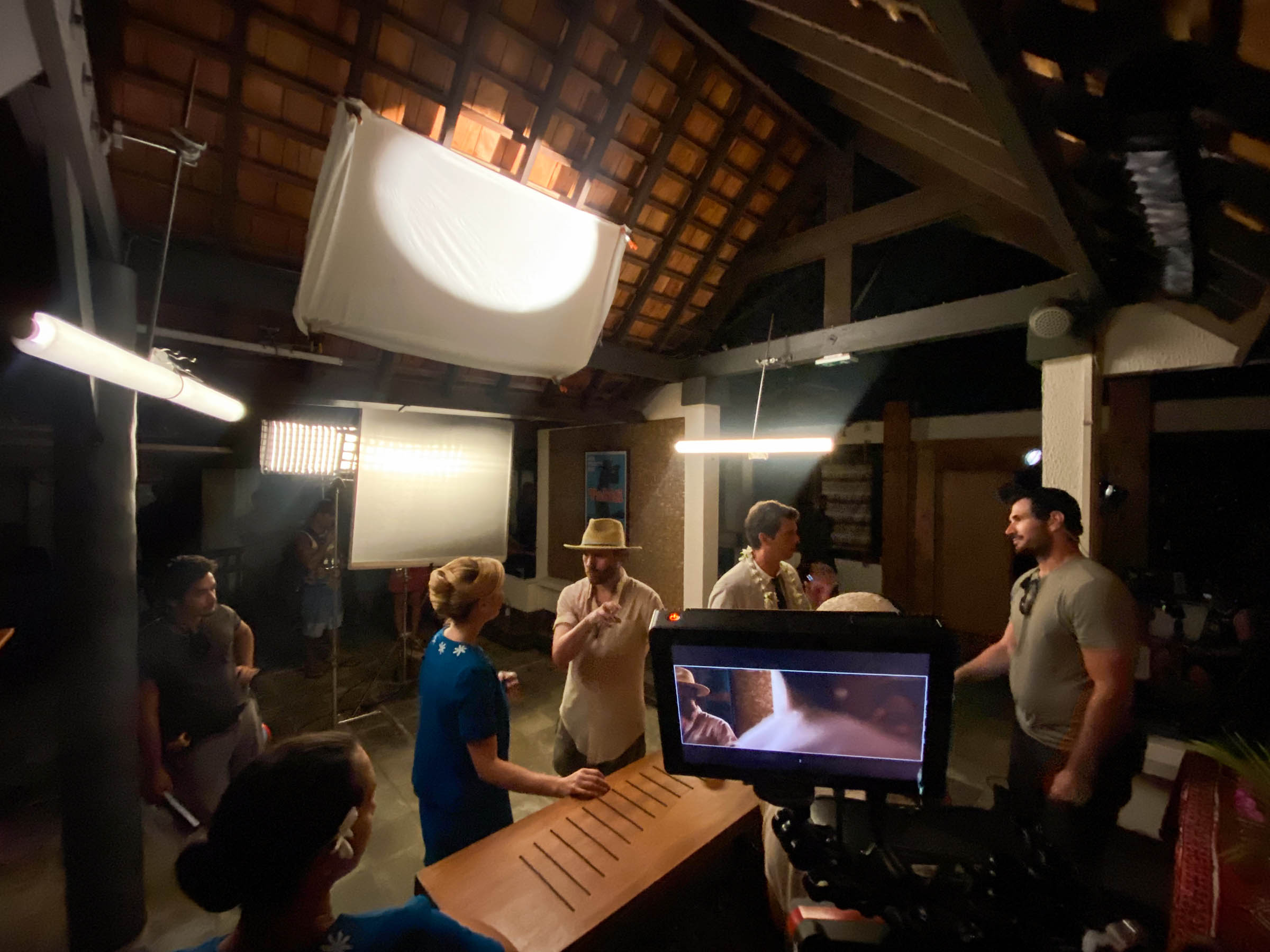
Litemat 2L source pushing through a 4×4 diffusion. Astera Titan tubes with white noodles cut to size for extra diffusion.
Did you use filters?
On location for Waltzing with Brando, I used Tiffen Black Promist filters.
How did you achieve the 1970s film look?
I designed a LUT based on a film emulation. I had my MacBook Pro with a really high-speed drive: the iodyne Pro Data 24TB Thunderbolt NVMe. Our data manager backed everything up during the day, and then at night I had a whole system set up with DaVinci Resolve to make dailies.
The editor was with us, cutting as we were shooting in Tahiti to let us know if we were missing something or needed to pick something up. We knew how difficult it would be to return for reshoots.
I pulled framegrabs and brought them to set on an iPad to share with Billy. The “look” also involved makeup. There was a lot of spray-tan and getting skin tones dialed in correctly. Marlon had a sun-baked look from having spent a decade in Polynesia. Bernie starts out very sun-burned when he first arrives and becomes more tanned over the years.
I love film. I wish we could get to use film as much as I used to. For the past five years or so, I have been studying film emulation for digital finishing. I think it’s a wonderful resource that allows us cinematographers to explore new potentials for the way things just look. To be able to create images in a way that’s not distracting but gorgeous at the same time is something that I really respond to in film.
For this production, we were going for the look of that 1970s era. We wanted to see film grain and halation of that time. The grain that I used was actually from 16mm Kodak 50D because that felt like 35mm negative from the seventies.
Was the film grain a plugin to DaVinci Resolve?
Yes. We used Video Village Filmbox in addition to our own LUT. Filmbox gives it a touch of softness, grain and halation that we liked in the image. videovillage.com/filmbox/
The cameras that we use are the canvases on which we get to paint. Yes, we might have preferences of how they resolve the paint, so to speak, but ultimately it’s about how they can achieve your ability. For me, the VENICE 2 saves time because of the built-in ND filters. There’s no substitute for saving time on set. I did the math for a 25-day shoot. Not having to swap ND filters over a 25-day schedule adds up to about six hours saved, and that’s half a day of shooting.
How did you get that seventies washed-out look?
That’s the look we had designed from the very beginning. Some contemporary filmmakers want to shoot film, but then they make it look like digital in some ways because of how they expose it. In my opinion, film capture is at its best when you’re almost breaking it, where you’re pushing the highlight range. We wanted to have a washed out look, but part of that was how we exposed it. We wanted to do to sell the heat of Tahiti because the humidity there is pretty serious. I love film when it’s overexposed, and the VENICE 2 with a film emulation looks great. You can stress it in a way that brings it closer to how film looks overexposed. Even when you do clip the highlights, which is not easy to do, it rolls off in a beautiful way.
What were your ISO settings for day exteriors?
We rated it at 800 base and just lightly overexposed scenes that we were trying to sell in the story—more of the heat, humidity and hard working conditions. I would tweak the base LUT depending on whether the scene required various degrees of saturation or heavier contrast, lighter contrast and how much the lenses played a part of that.
It’s been fun and interesting because I have another movie coming out at the same time as Waltzing with Brando. It’s called Bad Man. Same VENICE 2 camera, same Cooke S4/i lenses, the same basic LUT and also a digital film emulation. But these two movies look polar opposites. Obviously the LUT changed slightly between them. But, the lighting, production design, the environments all changed.
This is a great example of how we in the film industry place a lot of importance on camera and lenses, but it’s also about all of these creative decisions made by the team and the locations we choose. Bad Man was shot in Alabama in the wintertime with diffused, softer lighting. Waltzing with Brando was in Tahiti with harsh sunlight and a very deep vibrancy. So the color palettes could not be more different from one another.
Did you do a film-out scan from a digital intermediate?
No. We worked with Sugar Studios in Los Angeles. They took all the elements and the exact LUT that I had, as well as all the grain and film halation elements, and then used those as the base for grading. We went slightly more modern with the grade when we finished, and slightly less washed out than our dailies. To emphasize the magic that is Tahiti, we introduced more blues and greens to the water and vegetation than perhaps you might have had in the seventies with film. When things were at a brighter clip point, we let the saturation wash out a bit more. But if it was a deeper luminance curve, that’s when we tried to embrace more of those deeper colors.
Everything was finished and graded in DaVinci Resolve. We actually graded in HDR. I like the idea of HDR, but I didn’t necessarily love the way the highlights rolled off. I found them to be a little harsher.
In your 1970s film emulation, the Kodak Vision 50D film stock has about 11 stops of dynamic range.
Exactly. There’s a good example on a night interior with Billy as Marlon and the highlights are catching his face.
If you pull the highlights down too much, the contrast and tonality on his face becomes flat. Lacking depth and nuance. I don’t mind clipping some highlights. As I said, the VENICE 2 rolls off those highlights very well. Having high contrast scenes in Tahiti with people in front of bright environments and highlights rolling off gives you some softness, but still with perceived clarity. And when the film halation kicks in, it bleeds over in high contrast edges to help make people feel connected to the environment that they are inhabiting.
Does the halation come from the Black Promist filters?
Slightly. But most of it comes from the Film Box plug-in for DaVinci Resolve. Their grain is good and their halation is incredible. Our colorist Cooper Shine did a really lovely job.
How many shoot days and grading days?
About 27 total shooting days. 20 days in Tahiti. I think we did nine days of grading, which is a pretty short period of time for how much we had to do, but that’s a testament to having all this stuff sorted out before in prep. So it was a matter of just getting all those systems online and then you could really get into the weeds with the detail.
Did you have a DIT on set?
We had a data manager. Hiro was local in Tahiti, very experienced and really great. One of the really fun things was that in Morea we all got to stay in one house: our LA and Tahiti camera crew. We plugged in my TV and watched dailies together. We had family dinners every night and got to share a lot of ideas and stories. It was terrific learning experience. They taught us about Tahiti and the Polynesian culture.
How were the underwater scenes done?
We hired a great underwater cameraman and team who are known for surf photography. They had worked on the surfing events for the 2024 Olympic Games the Olympics. There’s a stunt sequence when Bernie jumps off the boat to get to Brando’s island and he almost drowns trying to swim over the surrounding coral reef with the waves pounding him.
How did you recreate the scenes from iconic Brando films?
We used archival footage for Dick Cavett and Johnny Carson. Godfather, Last Tango in Paris and Apocalypse Now were recreated. Some of the most famous scenes in all of cinema.
The biggest challenge was really for our production designer, Michael Clausen. We have done several features and TV shows together. He has 20 years more experience over me. When he talks, I listen. I remember one time when we were starting to work together. We were scouting in the LA hills, framing a shot. He muttered, “40mm would be perfect here.” I’m thinking: who is this guy telling me what lens to use? They all walked ahead of me. I pulled out my viewfinder and looked at the view with a 40mm. He was right. It was perfect.
One of Gordon Willis’s favorite focal lengths as well.
For the “Godfather” recreation, how you light the face, the top lighting, warmth and keeping the eyes dark were important. The director and I explored angles and ways to photograph Billy in the best possible way to sell him as Marlon. I wanted to play with people’s perceptions of Marlon. How we lit him at the beginning and end were different. In the beginning, I wanted to play up some of those Godfather ideas, not lighting the eyes as much, keeping the camera a little farther away, putting him in silhouette or semi silhouette, being removed.
In the beginning, he is a man of mystery. By the end of the film, we’re lighting his eyes a lot more. We’re putting the camera right in his face. We feel as if we’re his friend, just as Bernie felt. The Tahitian aspect is the side of Marlon that few people have ever seen before. That was the tricky part. How much do I light his eyes? How do we explore that while still being original in our own way?
It was a terrific juxtaposition of famous Brando films and the idyllic Brando lifestyle in Tahiti. I guess logistics played an important role as well?
For projects like this, I like having one LUT. I like keeping my variables extremely minimal. I like video village to be small. We had handheld 7-inch monitors. If we want to turn around, it didn’t take us 30 minutes to break down and move. It’s just a five to 10 minute turnaround. It is really an exercise in how logistically savvy can you be? How much can you plan in advance to know the angles you’re looking at and to turn around and be efficient, shooting at the right time of day, shooting the right angle.
We had a terrific local crew. They never got rattled. They were cool, calm and collected. I adore all of them, and I would love to go back and just get to spend more time with them. I love that place. It’ll be with me for the rest of my life.
How did you get started in film?
I was into photography in high school—35mm, Medium and Large Format 8×10. My dad also dabbled in photography. I’m originally from Maryland. Now I live in Silver Lake, Los Angeles. Growing up, I thought that filmmaking was not a thing unless you lived in California or New York. I went to college not thinking about film as a career until I did a semester abroad in Dublin, took a film class, and the combination of living abroad and studying film and having my photography background made me realize that life’s too short to not do something you love. I finished college and made a documentary about snowboarding.
I went to grad school at American University where they had a small hands-on program with some incredible teachers and film critics who worked at the Washington Post. That provided a well-rounded education, not just how to light or shoot, but also to learn film theory, history and writing. I realized that being a cinematographer was where my heart was. And I haven’t looked back.
BTS Production Stills
by Garrett O’Brien and Edoardo Frattini
Framegrabs
courtesy of Deano Productions, Fallout Entertainment, Billy Zane Productions, Sugar Studios.
Crew List
Director of Photography Garrett O’Brien
A Camera First Assistant Lauren Peele
Tahiti Unit
Second Assistant Camera Benjamin Cicero
B Camera Operator Wael Shukha
Thierry Thuilier
B Camera First AC Michael Chomieniec
Drone Operators Oscar Tereopa
Michael Chomieniec
Digital Imaging Technician Hiro Briquet
Camera Trainee Torea Taeae
Underwater Cinematographer Tim McKenna
Chief Lighting Technician Teva Juventin
Best Boy Electrician Handy Lai
Electrician Robert Thuillier
Key Grip Teiva Drion
Best Boy Grip Iotua Tiarii
Grip Arnold Tetoe
LA Unit
Second Assistant Camera MinMin Tsai
Digital Imaging Technician Krisel Magna
Chief Lighting Technician Shimon Galiley
Best Boy Electrician Jack Motter
Lighting Technician Billy Yates
Key Grip Jamie Sutor
Best Boy Grip Steven Escoboza
Grip David Osuna (Gonzalez)
Andrew Harrold
Post
Post House Sugar Studios
Colorist Cooper Shine
Rentals
Cameras, Lenses and AKS Becine
Grip and Electric CFG
Equipment List
Camera and Lenses
Sony Venice 2 X-OCN ST codec, 5.6K at 17:9 cropped for 2.39:1
Cooke S4/i 14, 18, 25, 35, 50, 75 and 135mm
Angenieux Optimo Zooms 45-120mm T2.8 and 28-76mm T2.6
Angenieux Optimo 2x Extender
Tiffen Black Pro Mist
Easy Rig Vario 5 with Stabil arm
SmallHD 24” 4K High-Bright director’s monitor
Teradek Bolt 3000XT
Blackmagic Pocket 4K in 17:9 sensor mode
Zeiss ZE EF mount 21, 35 and 50mm
GoPro Hero Black 6K in log mode
DJI Mini 3 Pro drone shots – 4K at 24 or 48 fps
Data Transfers and Dailies
Apple Macbook Pro M1 Max
Iodyne ProData drive 24TB drive – ultra high speed SSD
2x 4TB NVMe custom enclosures
3x 40TB Seagate raid master back up drives
Underwater Camera
Sony A7S3 in S-Llog 3 at 4K maximum bit rate
Sony A1
Laowa 12mm F2.8
Sony G Master 50mm F1.2
Grip & Electric
2x Aputure 1200Ds, 2x Aputure 600Ds
2x Aputure Spotlight Kits
2x Aputure F10 fresnel kits
2x Litemat 4 spectrum; Litemat 2L spectrum w/ snapgrids
1x Litemat 1 w/ snapgrid
2x 300w tungsten fresnels, 2x 650w tungsten fresnels
2x Source 4 Lekos w/ 19, 26, 36 and 50 degree lenses
Astera Titan Tube Kit – 8x units with baby pin tube holders, magnet kit & snapgrids; white pool noodles for extra diffusion
CRLS C-drive Kit (and 100cm size in LA)
Dana Dolly kit
Large assortment of speed rail, frames and fabric in different sizes: full, 1/2 and 1/4 grid cloth, muslin, soft frost, ultra bounce and solids



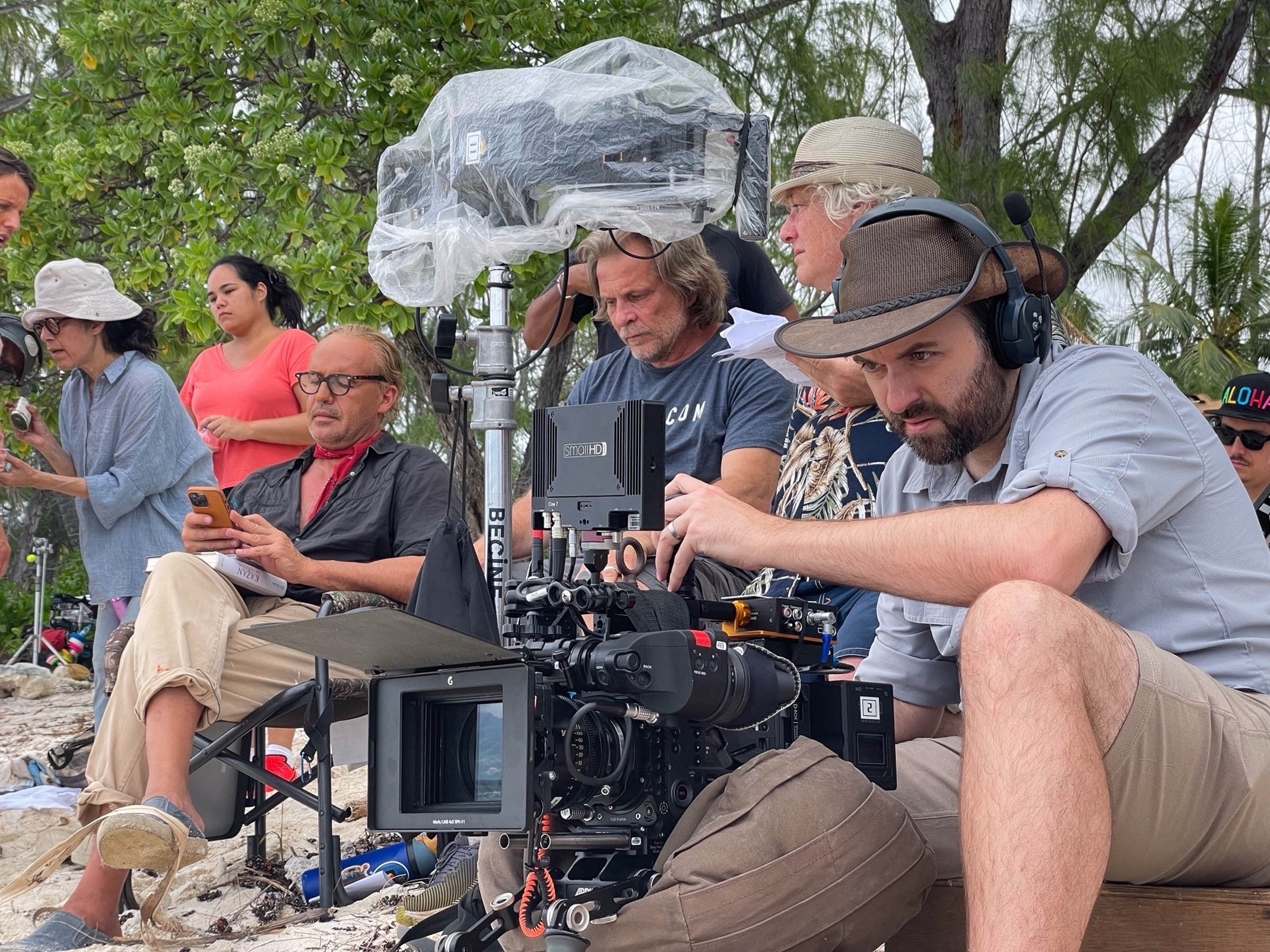
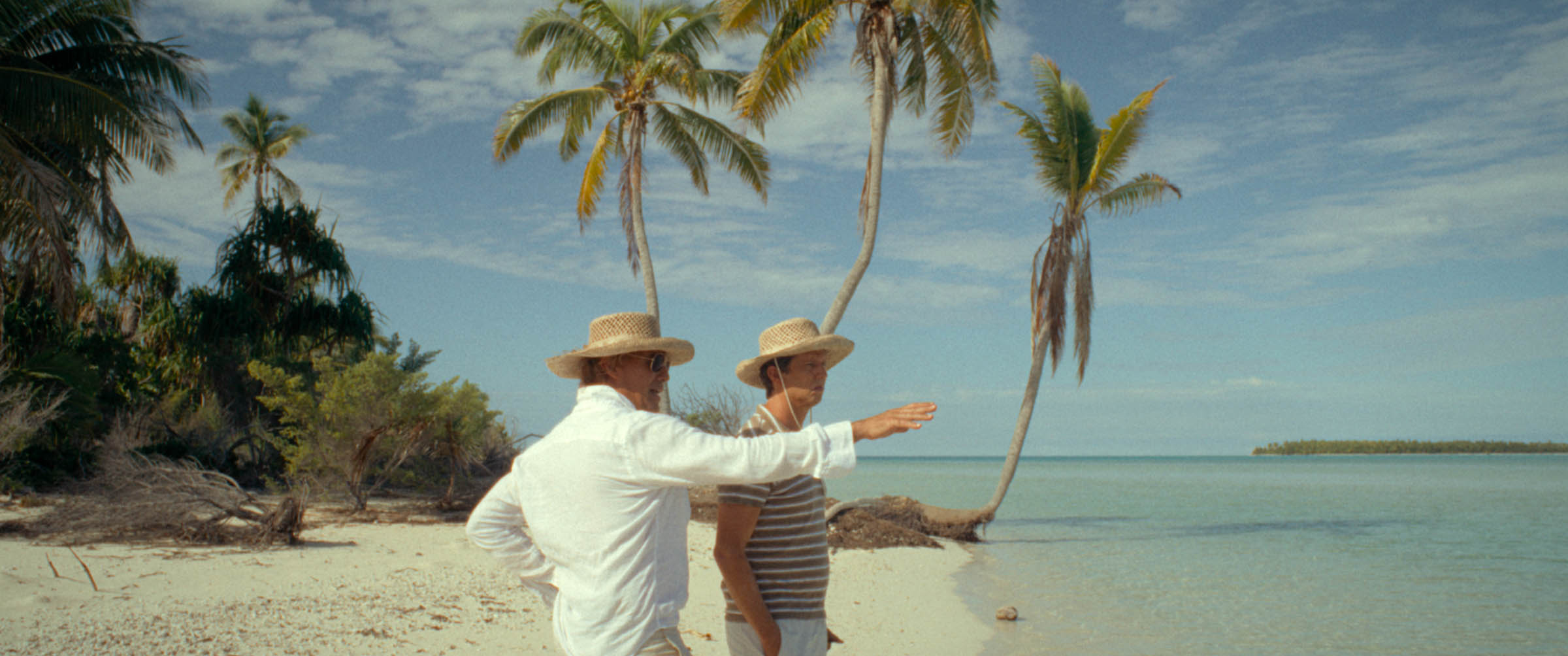

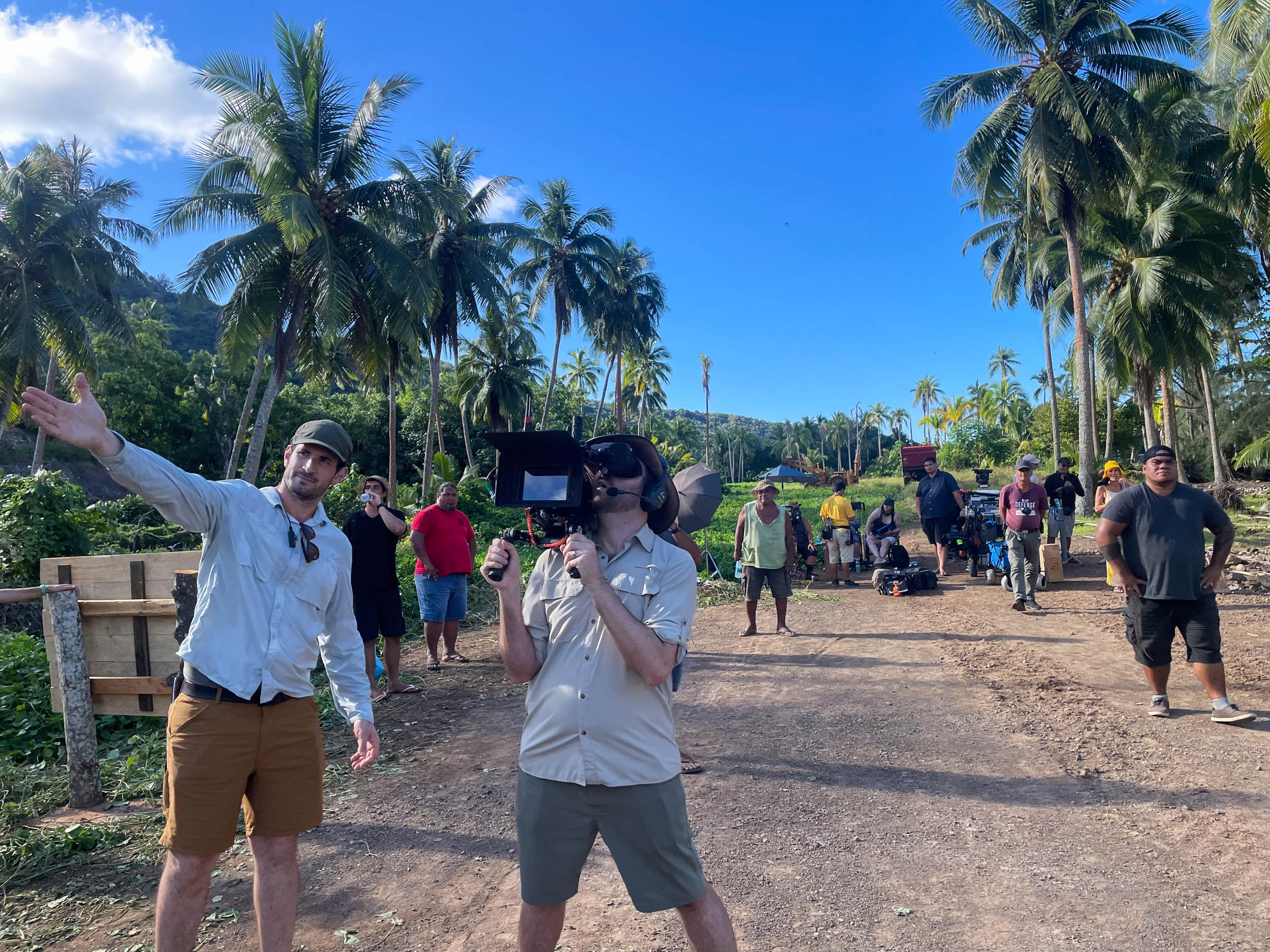
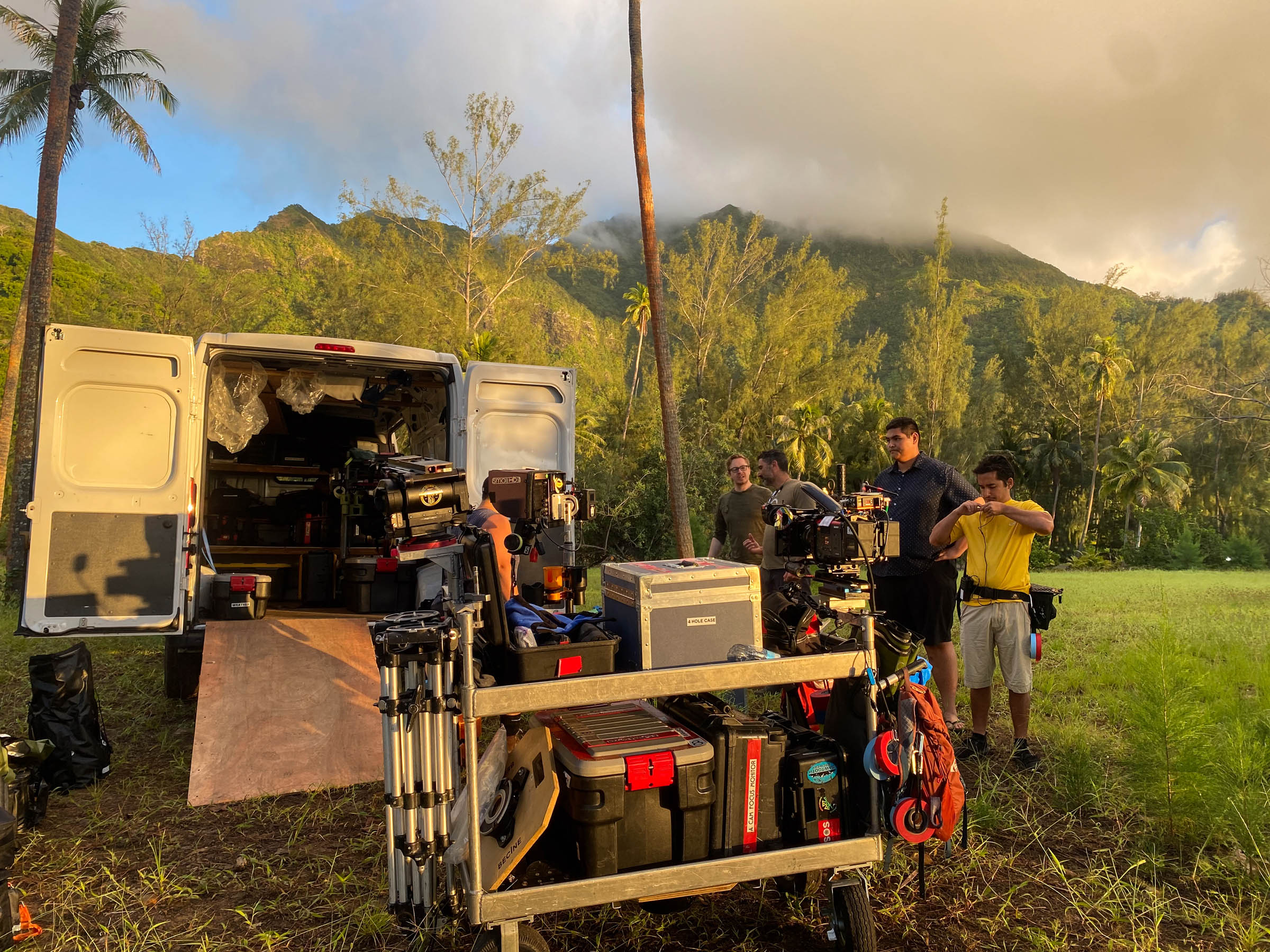


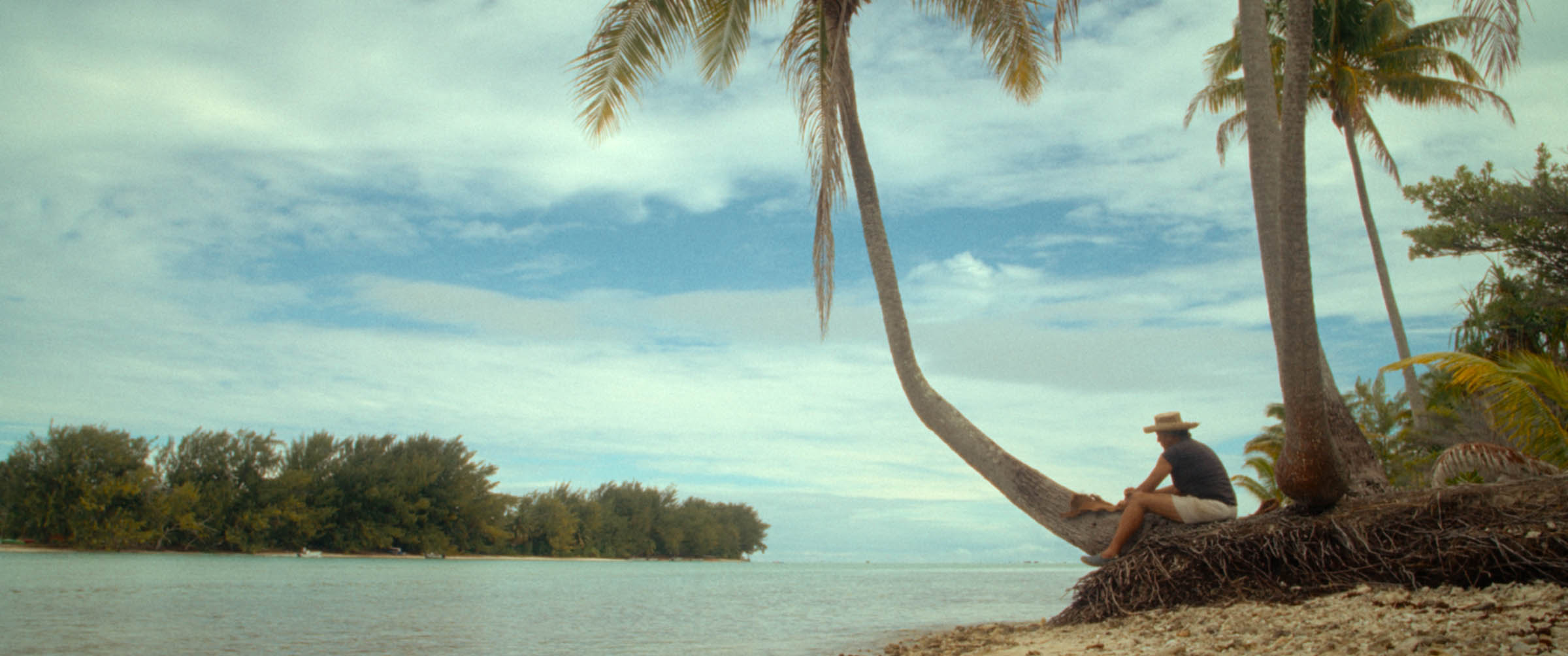
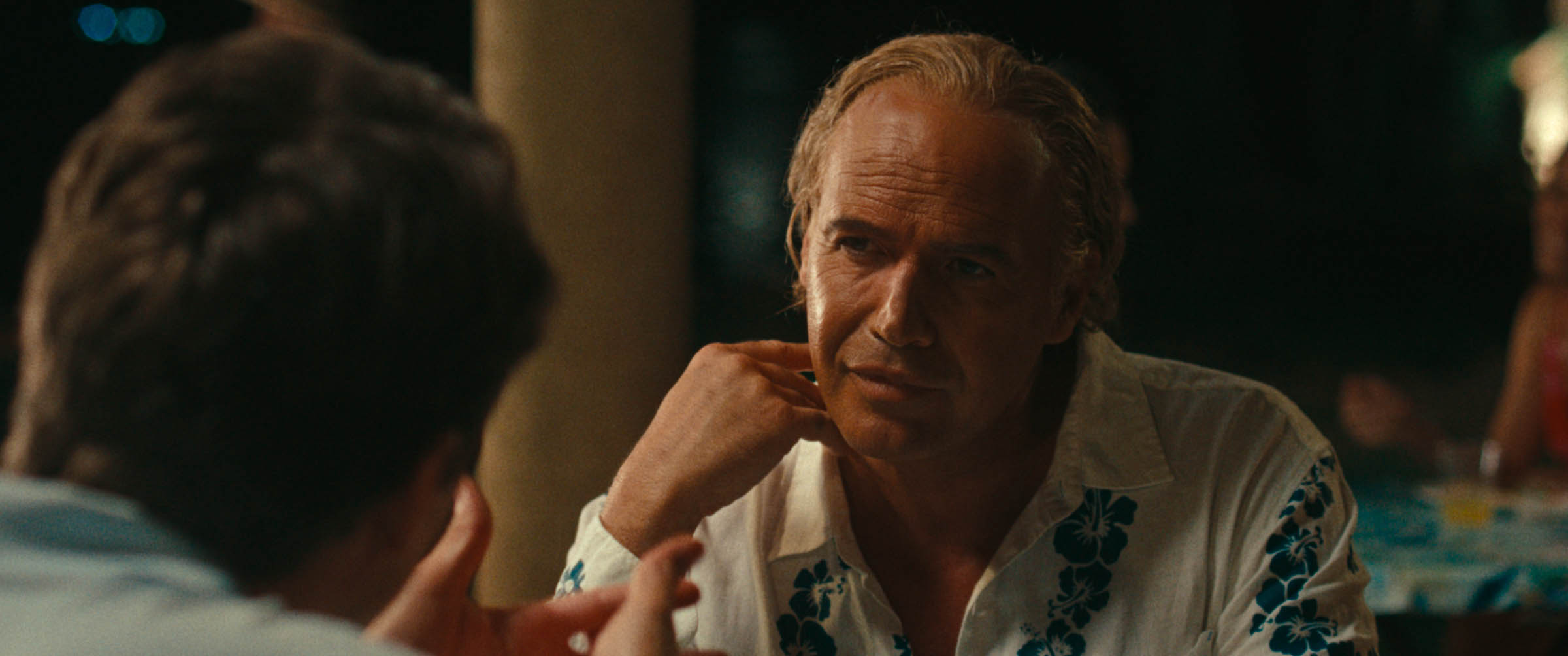














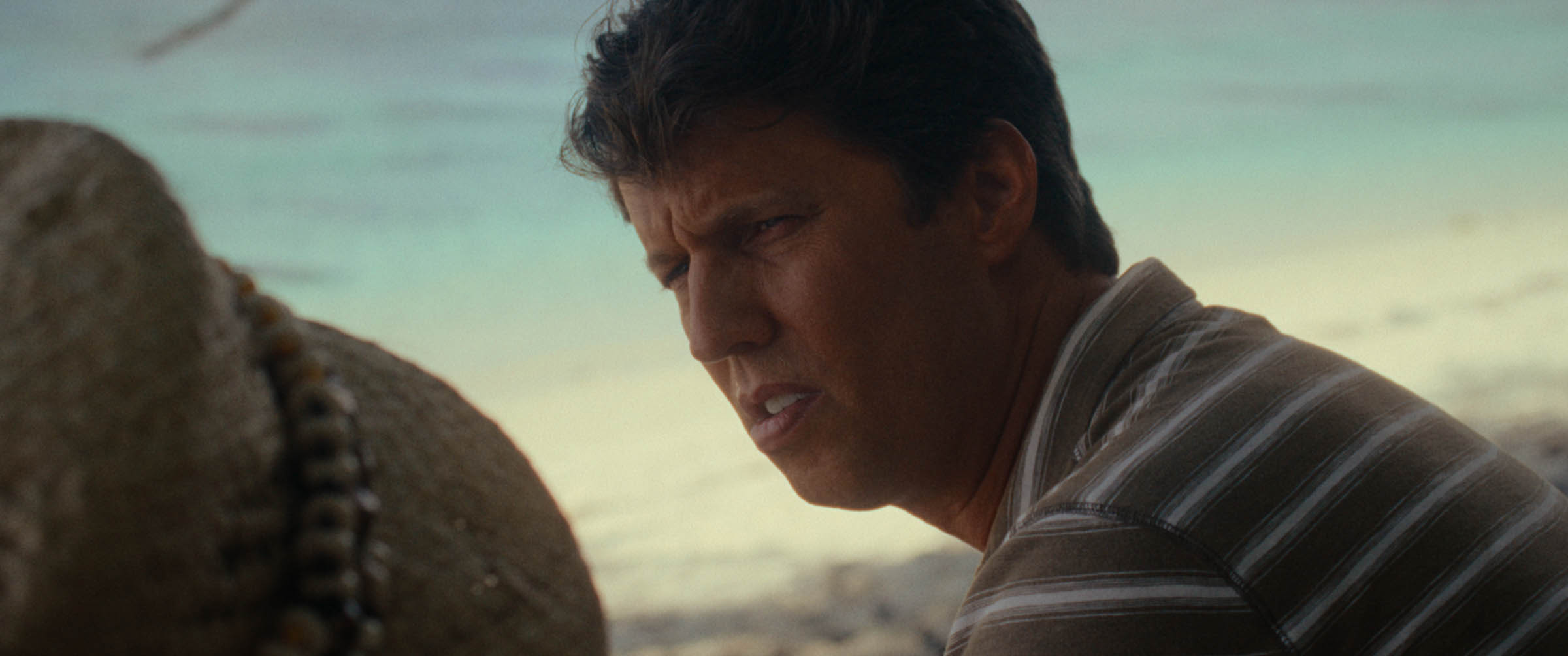







Awesome, Mahalo for sharing! looking forward to your shows release.